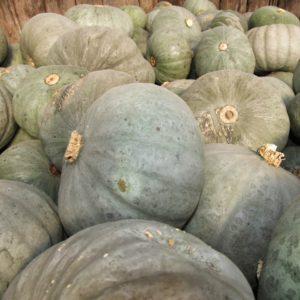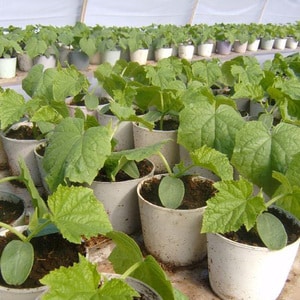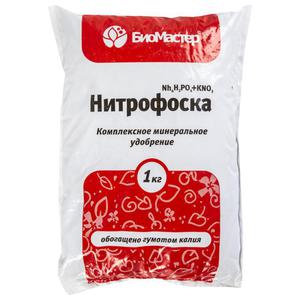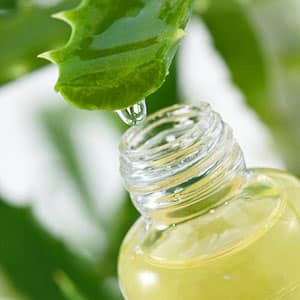Why is Marble pumpkin so popular among farmers: one of the most delicious varieties that produces a rich harvest
A glass of pumpkin juice at night helps get rid of insomnia, and regular consumption pumpkin seed oil improves digestion. For these reasons and not only the vegetable is popular and widespread among gardeners around the world. The Marble variety is recognized as one of the brightest representatives of the culture. Let's look at why farmers love this vegetable so much and how to grow a rich harvest of Marble pumpkins.
Description of the variety
The Marble variety ripens within 125 days from the moment of planting, so it is characterized as medium-late. Bushes with long vines, many thick leaves. The root system is powerful, which is why per 1 sq. m plant no more than two bushes.
Distinctive features
 The Marble variety is not demanding regarding growing conditions; it performs well both in open ground and in a greenhouse or greenhouse. Planted by seedlings or without seedlings. Vegetables contain a large amount of vitamins, as well as potassium, magnesium and fiber.
The Marble variety is not demanding regarding growing conditions; it performs well both in open ground and in a greenhouse or greenhouse. Planted by seedlings or without seedlings. Vegetables contain a large amount of vitamins, as well as potassium, magnesium and fiber.
Marble is distinguished by its interesting color and original fruits.
Fruit characteristics and yield
The pumpkins are large, with a dense skin and strong ribbing. The color is dark green or gray, sometimes white spots appear on the surface. The weight of one vegetable is from 4 to 11 kg. The pulp is rich orange, delicate in structure.
The taste is sweet and juicy. The fruits contain a large amount of sugars and saturated acids.The variety is resistant to transportation and has an excellent shelf life. From 1 sq. m summer residents collect about 6 kg of delicious vegetables.
How to grow
Some gardeners sow vegetables with seeds in the ground, while others prepare seedlings. The first method is perfect for the southern regions of the country, and the seedling method was created for areas with unpredictable climatic conditions. Let's consider each method and technology for growing the Marble variety.
Planting by seeds
To begin, choose high-quality seed material. As a rule, it is bought in a store or borrowed from friends. In both cases, be sure to disinfect the seeds. Warming up in the sun for seven days or a solution of hydrogen peroxide in which the material is soaked for two hours will help with this. Disinfection is a necessary condition, since the procedure rids the future plant of diseases and protects it from insects.
After the seeds, proceed to disinfect the soil. The chemical drug “Fundazol” is perfect for this. This is a quick and effective remedy for any soil. After applying “Fundazol”, treat the soil with “Fitosporin” a month later. The products can be purchased at any gardening store.
Important! For planting, choose sunny and spacious areas. Pumpkin prefers a mixture of loamy and sandy loam soil. At the end of October, dig up the beds and apply fertilizers, such as peat or humus. Before planting, dig again and apply organic fertilizer. Remember that future beds should not contain weeds or last year’s plants, as well as household waste.
Plant Marbled pumpkin only in previously prepared soil. When planting, use river sand or sawdust - these materials serve as an excellent drainage layer.The distance between the bushes should be at least 70-80 cm. Otherwise, they will have little space for normal development.
Planting seedlings
 Seedlings are planted in a variety of containers. For example, in cardboard milk boxes. In this case, the main thing is to wash and dry the container well. If this is not done, then lactic acid bacteria can harm young seedlings.
Seedlings are planted in a variety of containers. For example, in cardboard milk boxes. In this case, the main thing is to wash and dry the container well. If this is not done, then lactic acid bacteria can harm young seedlings.
Small drainage holes are made in the bottom of the boxes and placed on a plastic tray. Gardeners also use wooden boxes, peat pots or plastic containers.
Containers for seedlings should be easy to use, accessible and environmentally friendly.
Don't forget to prepare the soil. You can do this in several ways:
- Prepare the mixture yourself. To do this, you will need soil from the garden, humus, sawdust and ash (in a ratio of 4:1:1:0.5). This composition requires mandatory disinfection, which is carried out using a solution of potassium permanganate. It’s not difficult to prepare the soil; the main thing is to purchase all the ingredients in advance.
- Buy the ready-made composition in the store. The advantages of such soil are that it is more nutritious and contains the required level of acidity. Also, ready-made formulations are already disinfected in advance and are affordable.
Grow seedlings in a sunny place. Every seven days they water with warm, settled water, and after two weeks they begin to add liquid organic matter or mineral complexes. Experienced summer residents advise using the growth stimulator "Kornevin", which strengthens the root system and increases the immunity of sprouts. They are also planted at a distance of 70-80 cm from each other in pre-disinfected soil.
Care
Young bushes spend about 2 liters of water, and adults - about 5 liters. The crop especially needs watering during flowering and fruiting. Pour directly under the root so that moisture does not get on the stem and leaves. Before doing this, loosen the soil so that the water gets as deep into the ground as possible.
Important! The best water for pumpkin is rainwater. To assemble it, install a drainpipe and a large tank on the site.
In addition to moistening, the beds are regularly weeded. Weeds are destructive to both young plants and ripe vegetables. They take nutrients from the bushes and negatively affect the microflora of the beds. Combine weeding with loosening - this will have a beneficial effect on the plant. The procedures are especially active after rains or fogs.
A necessary condition for obtaining a rich harvest is the application of fertilizers. The culture responds well to yeast, nettle and aloe juice. Solutions based on these ingredients accelerate plant growth and make the fruits tastier.
Plus, pumpkin responds well to fertilizers based on mullein or chicken droppings. The vegetable also loves foliar feeding, for example, spraying from a spray bottle with a solution based on onion peels.
Features of cultivation and possible difficulties

The Marble variety requires the formation of a bush and the removal of stepsons. As a rule, the vegetable is formed into one stem, leaving about three fruits on one vine.
Flowers and other shoots are cut with garden shears. Next, pinch the top to stop the growth of the plant. You also need to untangle the long lashes, lay them on the beds and sprinkle soil on top. This is very important for the normal development of the bush.
Do not forget to regularly feed the bushes with mineral fertilizers.Ammonium nitrate, which contains a rich complex of minerals, is recognized as an excellent remedy. In addition, summer residents use fertilizers based on superphosphate or nitrophoska.
Important! If the fruits have grown large and heavy, then summer residents put boards or stones under them. If this is not done, the vegetable may begin to rot if it comes into contact with the ground. Also, stems and shoots may break under the weight of the fruit.
Growing tips from experienced gardeners
Many summer residents share their secrets of a rich harvest. Among them, the most common are the following:
- Plant pumpkin after legumes or onions, avoid planting after zucchini or squash.
- Prepare the seedlings three weeks before planting in the ground.
- If you grow pumpkin in a greenhouse, do not forget to ventilate it regularly. The greenhouse has a special microclimate and high humidity; regular ventilation helps to avoid it. Otherwise, the risk of developing fungal diseases increases.
- The ideal water temperature for irrigation should be at least 20 degrees.
- Moisten the beds early in the morning or evening to avoid sunburn.
- Periodically water your pumpkin patches with an ash solution rather than water. Ash nourishes the soil and helps produce a richer harvest.
- The depth of loosening should be at least 10 cm.
- If you use growth stimulants, watch the dosage. If you apply the drug incorrectly, the bushes will develop solely due to internal reserves, which is why the plant will quickly die.
- From mid-August, they stop fertilizing the soil, as the pumpkin ripening period begins.
Diseases and pests
As a disease, pumpkin beds are occasionally attacked by white rot. First of all, the infection affects the fruits: they acquire a white coating and rot after 2-3 days. The reason for the appearance of rot lies in improper care and high humidity, which is why it is so important to carry out all agrotechnical procedures in a timely manner.
 As a preventive measure, gardeners use a solution of Bordeaux mixture. You can buy the product in a store or prepare it yourself. It is important to prepare protective clothing, goggles and a respirator when using liquid.
As a preventive measure, gardeners use a solution of Bordeaux mixture. You can buy the product in a store or prepare it yourself. It is important to prepare protective clothing, goggles and a respirator when using liquid.
The Marble variety is also affected by a disease such as bacteriosis. This is one of the most common and dangerous cultural diseases. Bacteriosis also appears due to improper care and weak soil. For treatment, an ash solution is used, which is sprayed on the bushes in the morning every seven days. In addition to its medicinal function, the solution also strengthens the plant’s overall immunity.
Among the pests, melon aphids attack the beds. Small insects gather on the bushes, the leaves dry out and curl. Because of this, the yield and quality of fruits are significantly reduced.
To combat melon aphids, summer residents use:
- copper sulfate solution;
- soap solution;
- aloe juice
Harvesting and application
The harvest begins in early September. The fruits are picked with the stalk; without it, the vegetable will quickly wither. Marble can be stored for up to a year, but for this it needs to create ideal conditions. Vegetables are stored well in dark and ventilated areas. Before storing, do not wash the pumpkin under any circumstances, but simply wipe it with a dry cloth.
The culture is rich in vitamins and beneficial elements. B vitamins have a beneficial effect on vision, and vitamin A is an excellent anti-aging skin remedy. The product is also indispensable for cooking dietary dishessuch as porridge, cream soup, soufflé and juice.
Interesting! Cream soup first appeared in France. Later, the British began to prepare the dish, who loved it for its nutritional value and warming effect. It is surprising that for a long time soups were prepared without broth. Residents of the south used only vegetables, fruits and spices. Residents of northern countries began to add meat or fish broth.
Today, pumpkin is baked, boiled and fried. It goes well with both meat and dairy products, and pumpkin seed oil recognized as one of the most useful. Also added to food seeds and flowers of bushes. For example, they prepare delicious and healthy vegetable salads based on pumpkin, garlic and herbs.
Advantages and disadvantages of the variety
 Among the advantages of the variety, summer residents highlight the taste qualities: Marble has a sweet and juicy taste, which makes the product indispensable for preparing most dishes.
Among the advantages of the variety, summer residents highlight the taste qualities: Marble has a sweet and juicy taste, which makes the product indispensable for preparing most dishes.
The beneficial composition of the vegetable appeals to those gardeners who monitor their health and adhere to proper nutrition. The fruits are well stored and transported.
In general, the plant has high immunity to diseases and pests, has an original appearance of the fruits and a dark green color.
Among the disadvantages, some difficulties in care are noted, namely the formation of a bush and the construction of additional support for the vegetable. Otherwise, the Marble Pumpkin variety has no significant disadvantages.
Farmer reviews
Not a single “store-bought” pumpkin can compare with the one grown in your own garden plot. Your own harvest is always tastier and more beautiful. However, not all gardeners were satisfied with the Marble Pumpkin.
Ekaterina, Volgograd: “I prefer only sweet varieties, because they make delicious dishes.I tried to grow Mramornaya, and it worked. The maximum weight of one pumpkin is 5.5 kg, the fruits are emerald in color. I prepared part of the harvest immediately, and put the rest away for storage. We will enjoy the product until spring.”
Elena, Penza: “A neighbor recommended planting Marble Pumpkin in a greenhouse. The vegetable turned out to be easy to care for; I just watered and weeded the beds. I also fed the plant four times with manure and nettles throughout the entire season. The harvest turned out great."
Marina, Orenburg: “I always plant 2-3 different pumpkin varieties on the plot. Last year it was Pearl, Marble and Pineapple pumpkins. Of all three, Mramornaya showed the worst result. The ovaries formed slowly, the pumpkins were small.”
Conclusion
Marbled pumpkin is a beautiful and large fruit of emerald green color. The vegetable will decorate any garden, be it the northern or southern region. The plant takes root in any climatic conditions and is characterized by stable and high productivity.
The vegetable is multifaceted in use: it is suitable both as a main dish and as a dessert. The product goes especially well with cinnamon, honey and ginger.